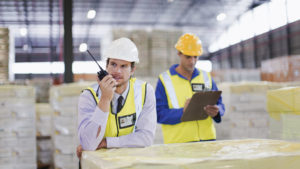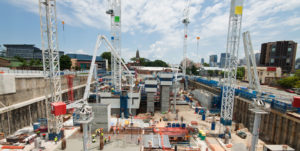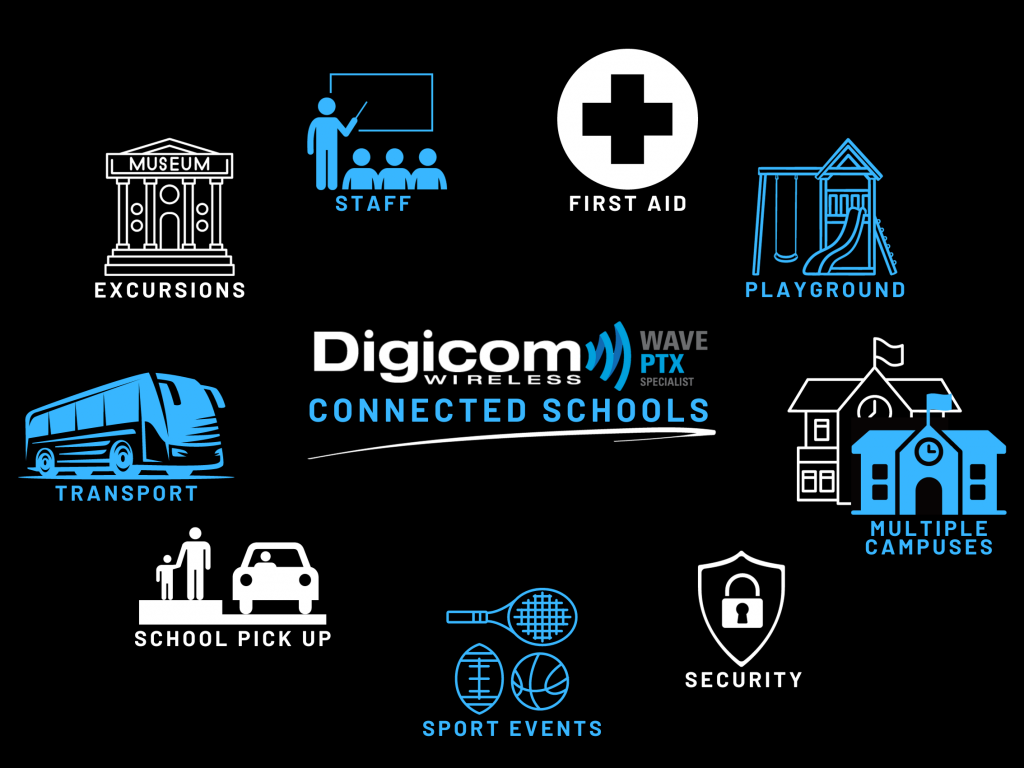A two-way radio is one that can both transmit communications, like conventional broadcast radio, and receive communications through a transceiver. This device, also known as a push-to-talk (PTT) radio, has revolutionised many professions.
The history of two-way radios
Mobile two-way radios were first embraced in a significant way here in Australia by Senior Constable Frederick William Downie in 1923, so they are nearly a century old! Downie was a member of the Victoria Police, and his innovation was a game-changer for his unit. Rather than having to use public phone boxes on the street to communicate with headquarters, with two-way radios, the Victoria Police could talk to each other from any location.
The early Victorian Police radios were a big step up from the first two-way radios used primarily on ships in the early 1900s. Those radios were much larger and could only be used from a fixed location, such as a ship’s radio room. Furthermore, they didn’t allow for voice transmission, only Morse code. Downie’s mobile version was truly revolutionary.
Where two-way radios are used today
Nowadays, police and military forces around the world use two-way radios as an essential tool.. Scaled-down versions marketed as walkie-talkies became available to the public in the middle of the 20th century. In fact, the two-way radio became so popular and reasonably priced after World War II that even children bought them for play. In the 21st century, many families take radios on camping and outdoor adventures, and these handy radios have become common with businesses and other institutions..
In addition to law enforcement, many first responders use two-way radios today. Virtually every fire department, paramedic organisation, evacuation group, and search and rescue unit depends on them for instant communication in the field. Two-way radios facilitate talk between colleagues, with incident command, and with other agencies.
There are a host of other industries that depend on two-way radios as well. Many of these appreciate the advantages of two-way radios over mobile phones, discussed below in the next section:
- Construction and municipal engineering
- Mining, gas, and oil
- Education and research
- Event hosting and planning
- Extreme sports
- Camping, hiking, and wilderness travel
- Agriculture and forestry
- Earth science and technology
- Maritime
- Manufacturing and industrial processes
Anywhere people need to communicate over distance, especially when other means aren’t convenient or available, you will find two-way radios in wide usage. Radios are ideal for emergency scenarios, which are cropping up more frequently with increasingly severe weather events, natural disasters, and threats to national security..
Two-way radios make job sites safer in high-risk areas like construction and manufacturing. And they make it easier to run any kind of public event, from marathon races to weddings, where staff need to talk to each other from afar, often with no Wi-Fi or mobile signal at their disposal.
The benefits of using two-way radios
You might be asking why people are still using two-way radios after the advent and adoption of mobile phones. It turns out that mobile phones aren’t always a good option and that two-way radios offer many advantages that cellular phones don’t.
The design and construction of two-way radios make them better suited to a variety of harsh environments, whether for work or recreation. Radios are constructed with robust mil-spec housings and feature heavy-duty components, unlike mobile phones that often end up with shattered screens and problematic charging ports and cables..
The buttons on two-way radios are larger (no touch screens), so they are easier to operate with gloved hands and in extreme temperatures. This makes two-way radios a natural fit for construction job sites, outdoor activities, and fire-rescue missions, among other pursuits. Whilst these radios today have many high-tech features, they are also still easy enough for almost anyone to use in an emergency.
In many scenarios, mobile phones aren’t an option because there is no signal. This is a given in many remote regions of Australia, but it can also apply to urban locations, such as tunnels, tanks, troughs, underpasses and high-load on cellular networks. If you and your employees depend on being able to communicate to get work done or to maintain safe working conditions, two-way radios are literally lifesaving.
We have a lot of clients who need to be able to broadcast to multiple workers or subcontractors at once. You can’t do this with a mobile phone, but a two-way radio system makes it easy. Anyone with their radio on will receive transmissions and be able to respond if needed. During times of duress, being able to reach many people simultaneously can mean the difference between life and death.
Modern-day two-way radios have even better sound and voice clarity than cell phones. The volume range is superior as well, and so is the battery life.
Of course, mobile phone use demands expensive monthly plans, which can be prohibitive for volunteer organisations and businesses alike. And if you’re managing a one-time event, you don’t want to go to the trouble of arranging mobile phones and calling plans when you can simply hire two-way radios instead.
The latest in two-way radio technology from Digicom Wireless
You might be surprised by the latest in two-way radio technology since you last used this type of communication, particularly if it’s been a few decades. Two-way radios today offer a host of features for safety and convenience, including:
- Waterproof and built to various mil-spec standards
- Emergency alert systems for high-risk environments
- Improved display visibility on the screen
- Location tracking to know where others are
- Headset capability for hands-free usage
- Customised programming options for customisation and privacy
- Ability to connect with Wi-Fi and mobile devices on Bluetooth for flexibility
- Integration with existing radios for cost savings
- Extra-long range via repeaters and specialised antennas
If the inherent coverage of your two-way radio isn’t quite enough, you can add a repeater or pump-up mast (also known as a telescoping antenna) for improved range.
To learn more about the newest two-way radio technology, contact Digicom Wireless today. Our expert staff can help you select the right radio models and accessories for your job or event. With price matching, in-house maintenance, and a wide range of products, you’ll always find what you need and feel confident that two-way radios are still very relevant today!






